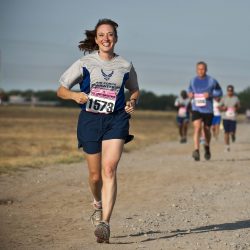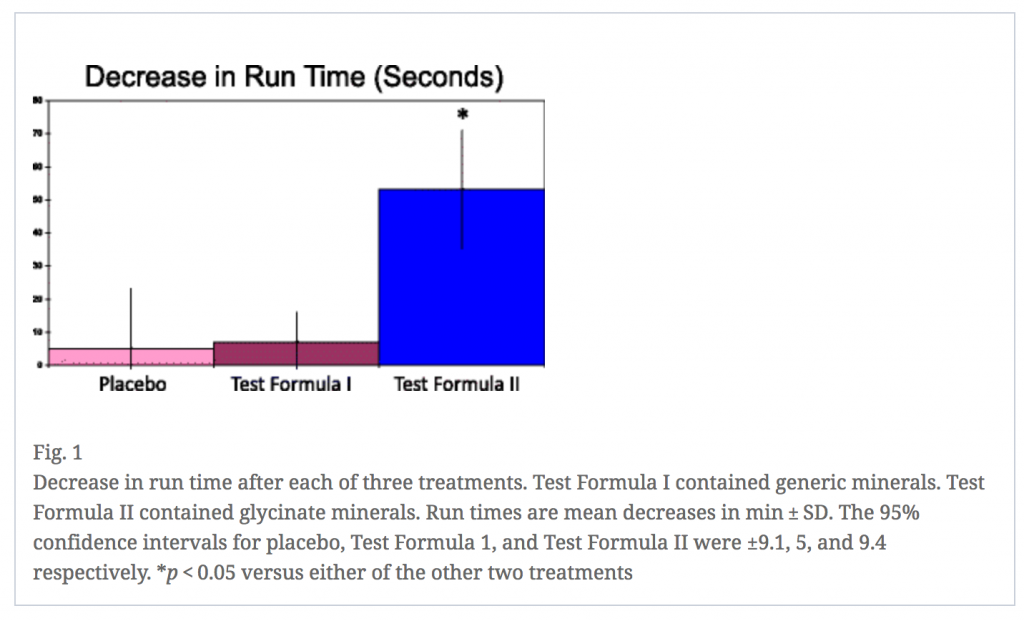A new study found that female athletes need more minerals and nutrients for energy than their male counterparts. In this study, women who took a specially prepared blend of minerals and nutrients for a month saw their 3-mile run times drop by almost a minute. The small study of young women, published in the Journal of the International Society of Sports Nutrition, compared the performance of those who took the supplement with a control group that took a placebo. The women who took the supplement also saw improvements in distance covered in 25 minutes on a stationary bike and a third test in which they stepped on and off a bench, according to research from The Ohio State University.
The minerals in the study included forms of iron, copper and zinc along with two other nutrients – carnitine (derived from an amino acid) and phosphatidylserine (made up of fatty acids and amino acids). Here is what the study found:
- In an initial experiment including 28 women, half of whom took the supplement, researchers found that those in the study group saw their 3-mile run times drop from 26.5 minutes on average to 25.6 minutes.
- Stationary bike distance covered in 25 minutes increased to an average of 6.5 miles, compared to 6 miles at the start of the study. Steps in the step test increased to almost 44 from about 40. All of the changes were statistically significant and were not seen in the placebo group.
- A second follow-up experiment – designed to see if the first was reproducible and test a lower dose of one of the nutrients – included 36 women and found a 41-second average decrease in run times.
“We know that young women, in particular, often have micro-deficiencies in nutrients and that those  nutrients play a role in how cells work during exercise,” said Robert DiSilvestro, lead author of the study and a professor of human nutrition at Ohio State. “They tend to eat less meat than men, and menstruation also plays an important role in mineral loss,” he said.
nutrients play a role in how cells work during exercise,” said Robert DiSilvestro, lead author of the study and a professor of human nutrition at Ohio State. “They tend to eat less meat than men, and menstruation also plays an important role in mineral loss,” he said.
“I decided to start with minerals that are commonly low – or thought to be low in many diets – and brought in some of the supporting cast. These two nutrients, which are needed for cell function, are made by our bodies but also come from food we eat,” DiSilvestro said. The study noted:
Micronutrient functions are needed for aerobic exercise. Therefore, aerobic performance should be helped by optimal intake of these nutrients including trace minerals. For instance, iron, even apart from its role in hemoglobin, affects aerobic energy metabolic pathways through functions in enzymes and cytochromes. Another trace mineral, copper, is part of cytochrome c oxidase, the terminal enzyme in aerobic energy metabolism. Other copper enzymes work against oxidative stress [1], which contributes to exercise-induced fatigue [2]. A third trace mineral, zinc, could affect aerobic exercise performance in a variety of ways: indirect antioxidant actions [3, 4, 5], a cofactor role in carbonic anhydrase that eliminates carbon dioxide [6, 7], a cofactor role in lactate dehydrogenase [6], and an activator of enzymes in energy metabolism [6].
Why Female Athletes Need More Minerals and Nutrients
In the study, those who took the supplement combo were asked to sprinkle it into a beverage of their choice twice a day. (In the second round of study, DiSilvestro’s team delivered the combo in capsule form.) The amount of nutrients in the supplements was well below a level that could cause harmful side effects, he said, and none was observed in this study.
Participants were recreational athletes 18 to 30 years old who had regularly done aerobic exercise at least two to three hours a week for six months. They also had to be runners. “We wanted people who could already run three miles without it being a terrible burden,” DiSilvestro said. He and his collaborators compared the women’s athletic performance at the start of the study to performance at the end of a 30-day study period. “The run-time drops in people at this stage of life were pretty large when they took the supplement. And in the placebo group, we saw little change,” DiSilvestro said.
For active young adult women, intake of these 3 minerals may often fall below optimal amounts. For iron, it well documented that exercising women often get a degree of deficiency [8]. Severe deficiency causes anemia, but even milder deficits could affect energy metabolism [9]. For copper, in young adult women, supplemental copper has improved copper function [10]. For zinc, in one USA diet survey, for about 40% of the women, intake fell below the RDA [11]. Moreover, the zinc RDAs may not even be set high enough [12, 13]. Multiple studies [1, 12, 13, 14, 15] find low intake of zinc in active people. This low intake especially applies to participants in sports that need weight control, people who avoid animal products, and people eating high carbohydrate, low fat and protein diets. Furthermore, exercise training may raise copper and zinc requirements [14, 16, 17]. This situation may not be fixed easily by all multi-vitamin-mineral supplements since many use zinc and copper oxide, which are not the best absorbed forms [4].
Though it’s less common for men to have mild deficiencies in these nutrients, with the exception of copper, DiSilvestro said he’s interested in whether he might see benefits in vegetarian men. Another potential area for study is in longer-distance running.
Click Here for Full Text Study






